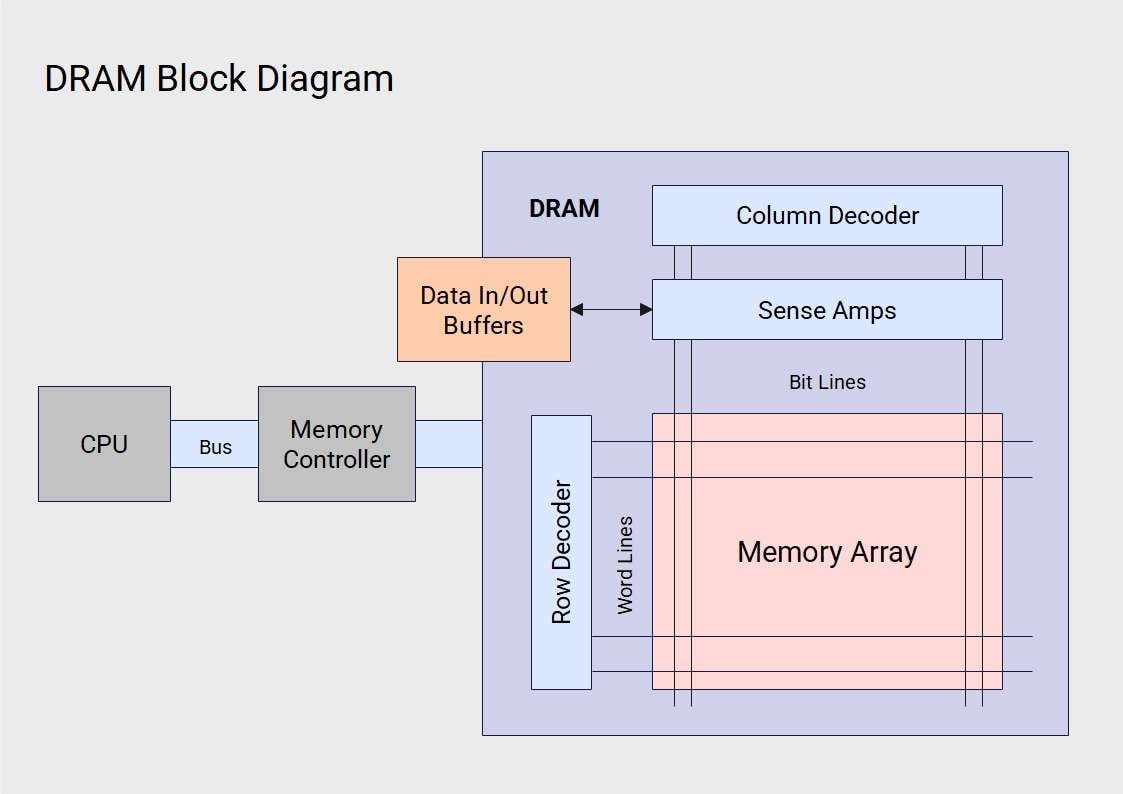Dynamic Random Access Memory (DRAM) is a type of semiconductor memory that stores data using capacitors and transistors. It is referred to as “dynamic” because the stored electrical charges gradually dissipate and must be refreshed periodically to retain data. DRAM holds information only while power is supplied, and once the device is turned off, all stored data is lost.
In this guide, we are going to discuss:
- What is a DRAM, and how is it different from other memory chips?
- Block diagram of the DRAM.
- The Applications of DRAM.
In the end, you will be able to learn how these advanced DRAMs have played a crucial role in our latest devices, computers, and home appliances.
In this article
DRAM Block Diagram
DRAM block diagram is used to understand the basic components and their working inside the chip. There are a lot of components in DRAM that contain information and data. They work collectively to provide the needed output. Here is the DRAM block diagram for you to see.
Main Components and Working Principle oF DRAM
Here are a few of the components of the DRAM.
- Memory Array: It is also known as the memory cell. It consists of Transistors and capacitors.
- Word Lines and Bit Lines: Word lines are also called row lines. These row lines are connected to the transistors and tell the system which row lines need to be connected to the transistors. Bit lines are also called column lines. They are used to connect the memory cell to the capacitor. The data information is shared between them through these bit lines.
- Sense Amplifier: It is used to read the capacitor information and change it to the logic units, i.e., 0 or 1.
- Column and Row Decoders: These two decoders are used to select the memory line from their respective lines.
Now, let's check out the working operations of DRAM.
The working of the DRAM is divided into three sections, named Write, Read, and Refresh Operations.
Write Operation
The input signals are stored in the column line or row line. The transistor for the chosen cell is activated. Then, the charge from the input signals is stored in the form of logic units. It could be in the form of Zeros or Ones.
Read Operation
The row line activated the transistor, from where the charge is allowed to flow into the column line.
The sense amplifier reads the signal from the column line and converts that signal to the logic units, which are more understandable for the chips. In this process, the charge discharges from the capacitor due to leakage, and data needs to be rewritten immediately.
Refresh Operation
After the discharging process, the data signal is then refreshed again to be stored in the memory collector unit. This happens in milliseconds, and the operation continues, making the data retention possible.
Applications of DRAM
There are a lot of applications where DRAM is used. Here are a few of them to look at.
Computer, Laptops, and Mobile Phones
DRAM is dynamic memory, so it needs to be refreshed. Computers, laptops, and mobile phone devices have these chips to restore the current data being used. It helps enable the chips to send information to the CPU constantly.
Most of the latest appliances being used in the home use these DRAMs. The appliances include smart washing machines, smart watches, Air conditioners, and smart home devices.
Graphics and Gaming Systems
Most of the latest gaming consoles use Graphics DRAM to render large textures and high-speed data recognition. These high-tech chips are used to make sure there are no delays in rendering.
Cloud Computing
Cloud computing needs larger amounts of data to process in real time. High-tech DRAMs are used to preserve and process data quickly. There is a need for multitasking in cloud computing, so large DRAMs are used for fast visualization and data processing.
Embedded Systems
DRAM chips are being used in smart TVs, IoT, automobiles, and larger industrial units where fast and temporary memory is needed.
The telecommunication systems also use these DRAMs, which might include high-performance modules, network controllers, and 5 G equipment.
Memory Storage Device
The DRAM, being the memory storage, is also used in permanent storage devices like hard drives, memory cards, and floppies to process the data faster and reduce the latency.
Network operators like modems, routers, and switches are used for regular data sending.
Medical Devices
The DRAMs are being used in devices like MRI and CT scan machines to store large and clear images in their storage in no time. They are also used to save data in memory and buffer this data before sending it to the printing machines.
How to Draw a DRAM Block Diagram
Creating complex block diagrams can feel like a daunting task, but the right tool makes all the difference. EdrawMax simplifies the process, enabling you to design professional-quality diagrams even if you’re a beginner. Below are some of the key features that make EdrawMax a powerful choice for diagramming.
- All-in-one diagramming tool: EdrawMax supports more than 210 types of diagrams, including block diagrams, floor plans, flowcharts, org charts, bar charts, and family trees.
- Available for all devices: The cross-compatibility of EdrawMax ensures flexibility. It is available for Windows, macOS, Linux, and mobile devices. You can use it online as well.
- Large template library: EdrawMax offers a huge template library for users, offering diagrams for almost every category.
- Multiple Import and Export options: EdrawMax offers numerous export options, including JPG, PDF, PNG, SVG, Visio, and HTML. You can also import Visio files into EdrawMax to edit them.
Now, let's discuss two methods that can be used to draw block diagrams for DRAM.
Method 1: Start from Scratch
Starting with a blank canvas can be challenging for some, but with an advanced tool like EdrawMax, the process becomes much simpler. Its user-friendly interface provides guidance throughout, making it easy to create diagrams using built-in symbols and elements. Follow the steps below to begin designing your block diagram with EdrawMax.
Step1 Open the empty canvas
- Open EdrawMax and click New and then Blank drawing to open the empty canvas.
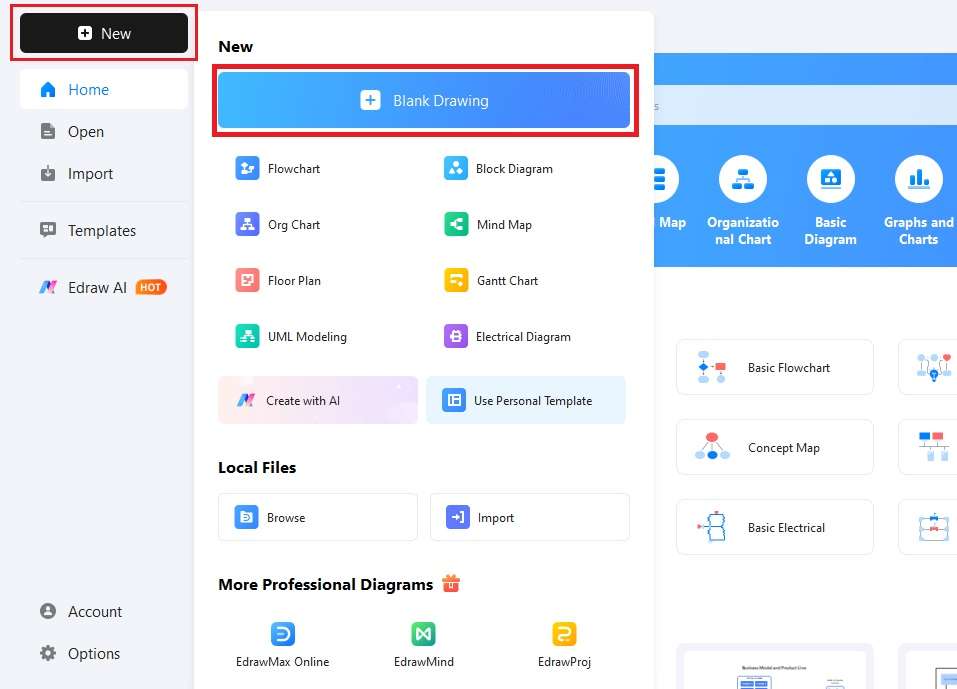
Step2 Start dragging the blocks on the canvas
- Drag all the blocks needed to make your DRAM block diagram.
- If you don’t find any of the relevant elements, use the search option to find them. It will help you have access to those shapes quickly.
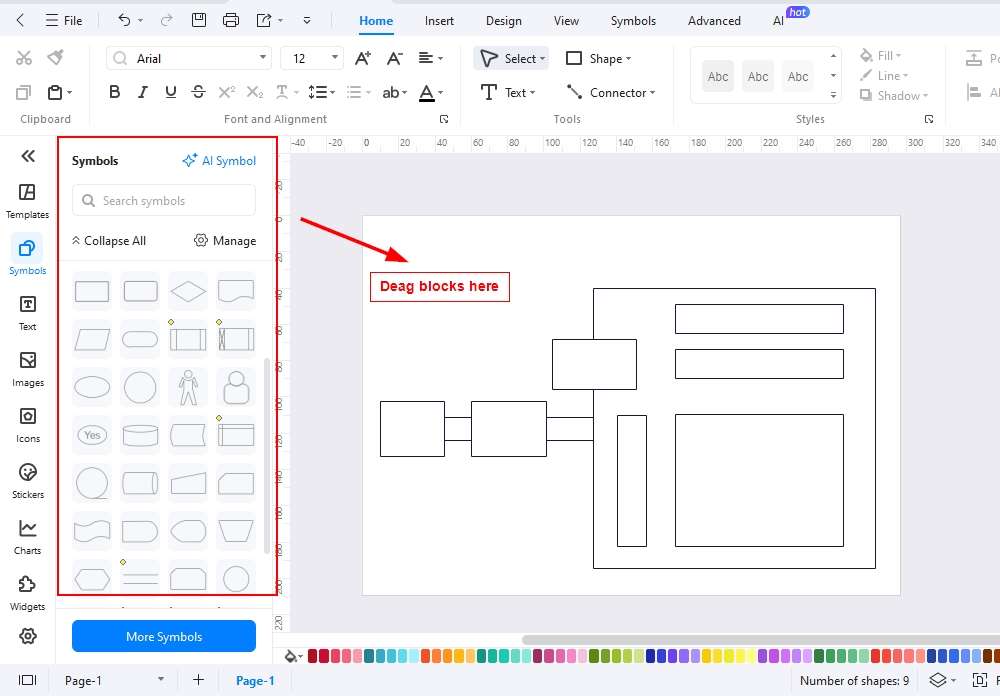
Step3 Arrange blocks and add texts
- Arrange all the blocks placed on the empty canvas.
- Start adding text in the blocks for more clarity.

Step4 Add relationships among the blocks
- Use the connector tool to add a relationship among the blocks.
- Or use the symbols library to add connections. Change the colors of the block as well.

Step5 Export your block diagram
- Click export now and save the block diagram in the format you desire.
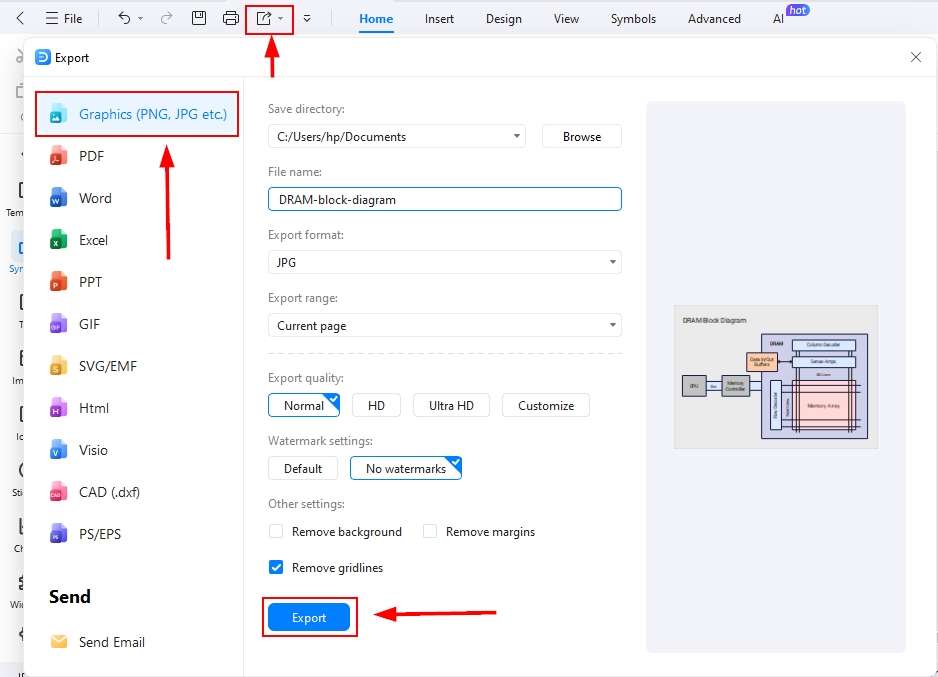
Your block diagram for the DRAM is ready. That is how easy it is to make a block diagram through EdrawMax, even when you start from scratch.
Method 2: Start with a Template
Starting with a template is even easier. All you need to do is make changes here and there, and your design will be ready. Here are a few of the steps you need to follow.
Step1 Open the templates library
- Open EdrawMax and click templates.
- Use the search bar to find the relevant designs.
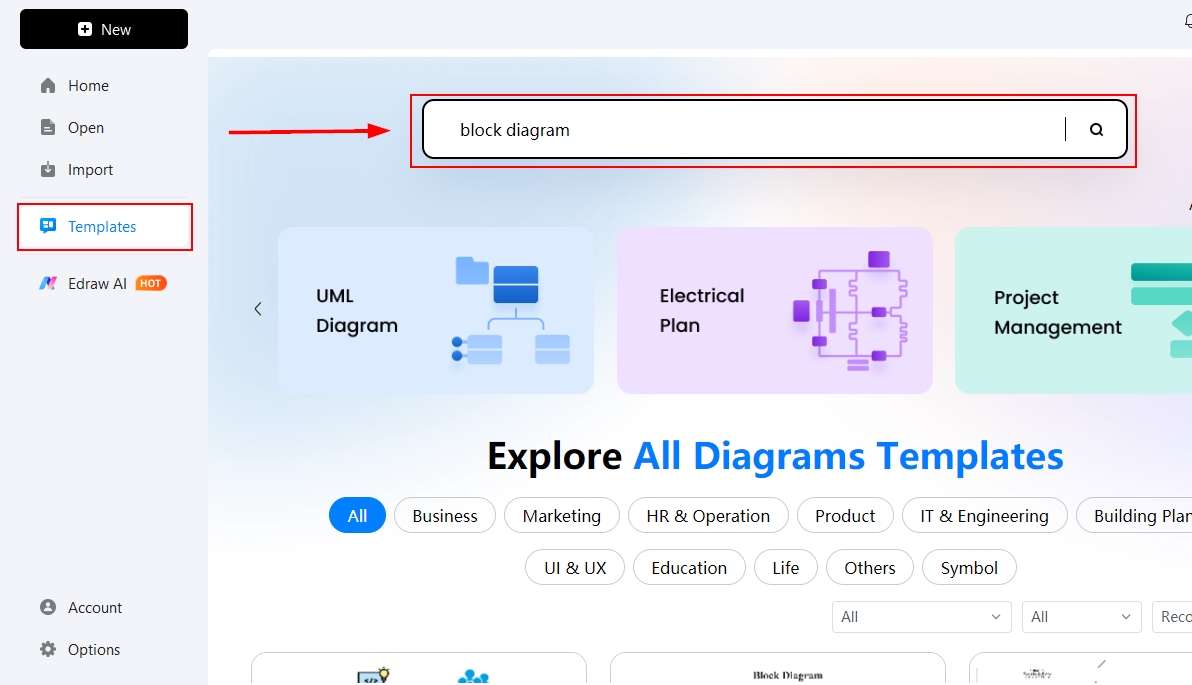
Step2 Select a template and click it
- Find the best designs that you can use to create your own block diagram.
- Once found, click it and bring it to the canvas for further editing.
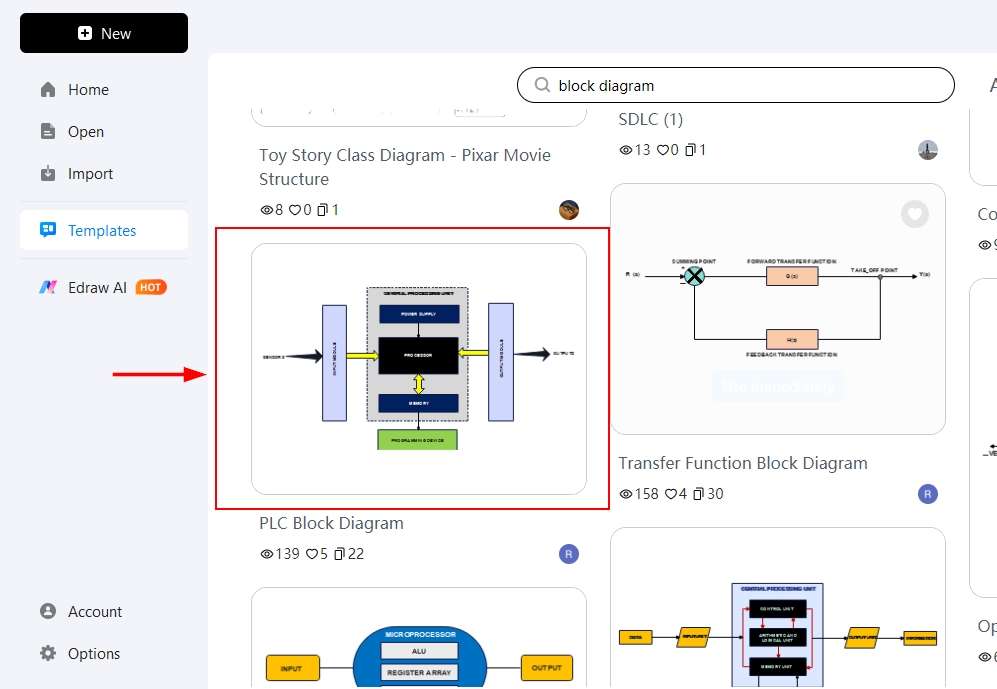
Step3 Start editing using the tools
- Edit the template on the canvas using the tools available.
- You can add or remove anything from the designs and make it your own design.
- You can change colors, themes, and connections.
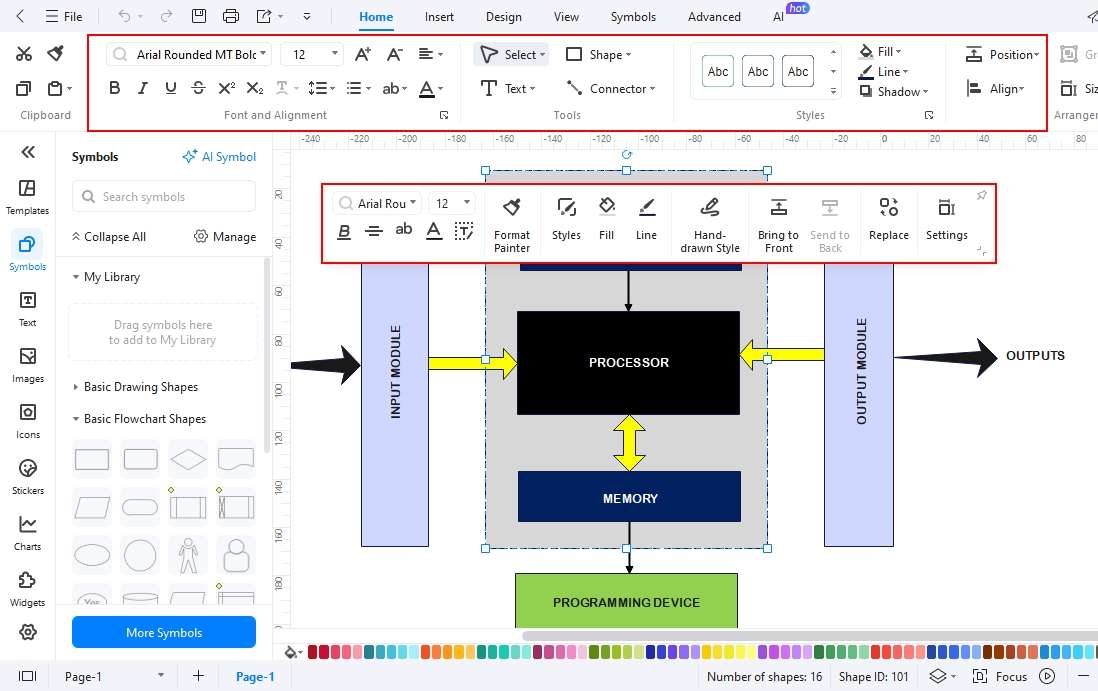
Step4 Save your block diagram
- Once all the editing is done, it's time to save your design.
- You should save the source file as well so that you can make changes to your design.
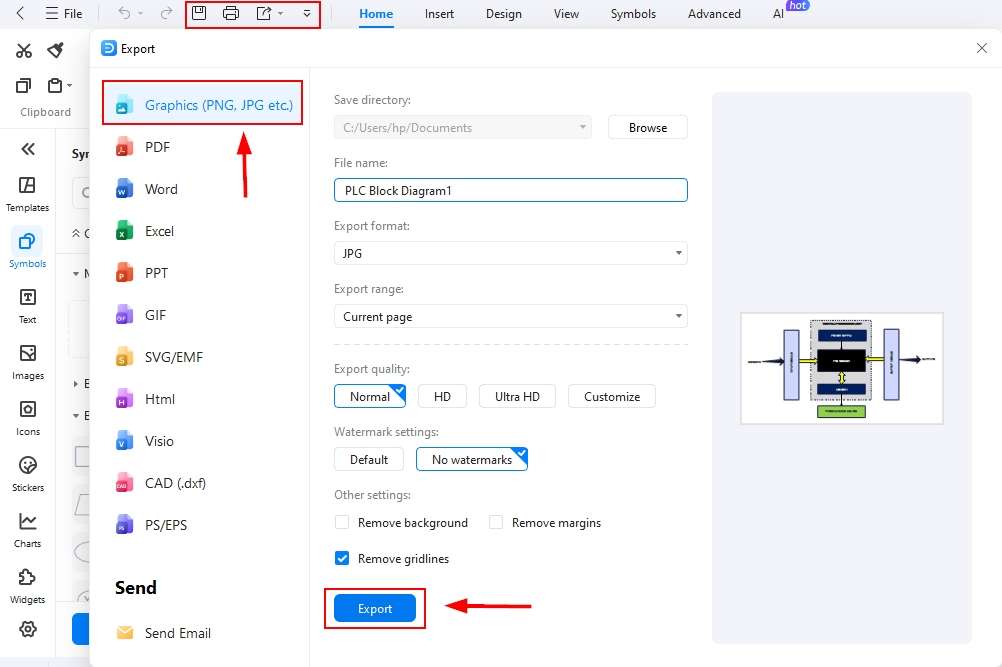
Final Words
DRAM is widely used in modern devices to enhance performance and efficiency, making it a crucial subject in today’s tech industry. To fully grasp its complex features and working principles, a detailed block diagram is essential.
EdrawMax makes this process simple by enabling you to create clear and precise DRAM block diagrams effortlessly. It not only helps learners visualize and understand intricate circuits but also serves as an effective tool for educating others on advanced concepts.




